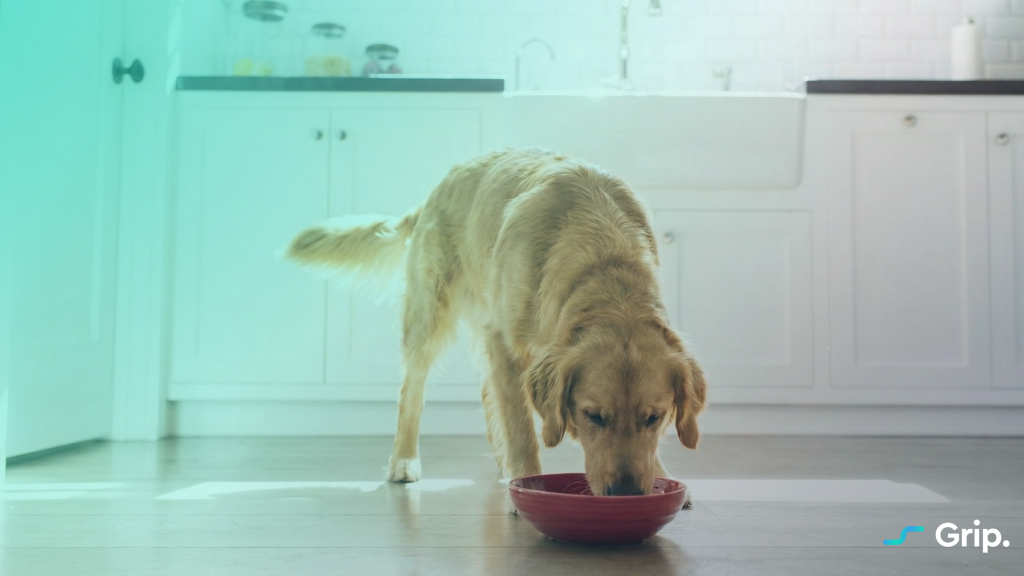Over the last several years, the pet food industry has undergone a noticeable shift toward human-grade, refrigerated, and frozen formats. These products are among the fastest-growing categories in U.S. retail, with refrigerated and frozen dog food posting roughly 30% year-over-year growth.
At the same time, pet owners have become significantly more discerning. Surveys show that 90% consider their dog’s health as important as their own, and 96% are willing to pay more for healthier meals. Many actively seek “human-style” qualities such as human-grade ingredients, minimal processing, and greater nutritional transparency.
This shift has created a new operational reality for modern pet food brands: in frozen DTC pet food, trust is earned through cold-chain precision and reliable temperature-controlled delivery.
When a box arrives thawed, late, or inconsistent in temperature, customers don’t see it as a logistics error, they see it as a safety risk and a breach of responsibility.
The Evolution of Pet Food Expectations
The industry has moved from kibble (which can sit in a warehouse for months) to frozen, raw, and human-grade meals. These formats have higher nutritional value, but they also introduce operational complexity that didn’t exist before. Here’s what has changed:
Weight & Cost Pressures
Frozen shipments are significantly heavier than dry kibble because they require insulation, refrigerants, and more durable packaging. This pushes many DTC pet food shipments into higher weight tiers, raising carrier costs.
Frequent Reorders
Most fresh pet food subscriptions ship on a 1–4 week cadence, depending on pet size and freezer capacity. This means:
- Missed deliveries create immediate “food gap” stress for customers
- Reliability in early cycles heavily influences subscription retention
Food Safety Expectations Rise
Pet owners increasingly expect fresh pet food to be handled with human-grade care. True “human-grade” products must meet the same ingredient and processing standards required for human food production, which raises the bar for cold-chain execution.
Why Delivery Reliability Is the Customer Experience
In frozen pet food, the cold-chain directly shapes brand perception. Across eCommerce, late, damaged, or compromised deliveries are one of the strongest drivers of customer dissatisfaction:
- 63% of consumers say long or unreliable shipping leads them to choose a different brand in the future.
- 17% stop buying from a brand after a single late delivery, and more than 50% churn after two or three.
- Negative delivery experiences are a primary source of poor product reviews in online food shopping.
When customers subscribe to a brand, they’re trusting them to handle their pet’s nutrition. Reliability becomes emotional. To the customer, a thawed box doesn’t feel like an operational error; it feels like carelessness that puts their pet at risk.
High-performing brands understand this and treat every logistics partner as an extension of their brand’s promise.
The Four Pillars of Cold-Chain Precision
To meet modern expectations, frozen pet food logistics must operate with the same rigor as human meal deliveries. The most successful operations share four foundational capabilities:
1. Refrigerant Optimization & Adaptive Pack-Outs
Temperature integrity begins at the box level. Static refrigerant formulas can’t keep up with seasonal swings, regional climate differences, or shifting delivery times in transit.
High-performing operations use:
- Dynamic refrigerant loads based on destination climate
- Seasonal pack-out models that anticipate temperature volatility
- Data-driven adjustments that reduce over-cooling and under-cooling
This approach maintains temperature compliance while lowering weight and cost.
2. Smart Carrier Selection & Lane Performance Matching
Every carrier performs differently depending on zone, season, and hub-to-hub flow. Leading brands pair shipments with the carriers and lanes where they consistently excel.
This includes:
- Lane-level carrier performance analytics
- Real-time carrier-hub monitoring
- Carrier selection that balances speed, reliability, and cost
- Continuous updates based on real transit-time behavior
The result is fewer delays, fewer thaw events, and a more predictable cold-chain.
3. Real-Time Shipment Visibility & Exception Control
Cold-chain reliability depends on knowing what’s happening before a shipment becomes a problem.
Best-in-class operators maintain:
- Real-time tracking across all carriers
- Alerts for delays, dwell events, and temperature risk indicators
- Early-warning triggers that enable reships or reroutes
- Customer notifications before frustration sets in
Visibility transforms the supply chain from reactive troubleshooting to proactive protection.
4. Subscription Cadence Modeling & Demand Forecasting
Pet food subscriptions move quickly, and every household consumes at a different pace. Operational precision requires staying one cycle ahead of the customer.
That means:
- Predictive models based on pet-specific consumption
- Accurate forecasting of inventory and fulfillment cycles
- Automated timing adjustments based on seasonality and order rhythm
- Systems that prevent “food gaps,” one of the strongest predictors of churn
This ensures the right product is ready at the right time, protecting both margins and loyalty.
The Impact on Brand Trust
When delivery performance becomes consistent and predictable, the effects ripple across the entire customer journey. Reliable frozen delivery strengthens relationships in several key ways:
Fewer Refunds and Replacements
Fewer thawed boxes means fewer refunds, fewer reships, and far less operational friction for support and fulfillment teams.
Higher Customer Confidence and Conversion
Pet owners increasingly treat their pets’ meals with the same scrutiny as their own food. When brands demonstrate dependable execution, new customers are more willing to commit.
Stronger Early-Cycle Retention
The first few orders of a pet food subscription set the tone for long-term loyalty. When early shipments arrive exactly as expected, customers build trust quickly and are far less likely to churn during the onboarding phase.
Longer Customer Lifetimes
Over time, consistent execution compounds into higher satisfaction and reduced friction. Subscribers stay longer because every box reinforces that the brand delivers reliably for their pet.
In short, cold-chain reliability protects margin, strengthens customer confidence, and lays the foundation for long-term subscription loyalty.
The Bottom Line
Growth in the frozen pet food category increasingly depends on operational maturity. The brands that invest in predictable, data-driven cold-chain systems will outperform on retention, margin, and customer confidence.
Need help shipping frozen or refrigerated pet food? Reach out: partnerships@gripshipping.com



